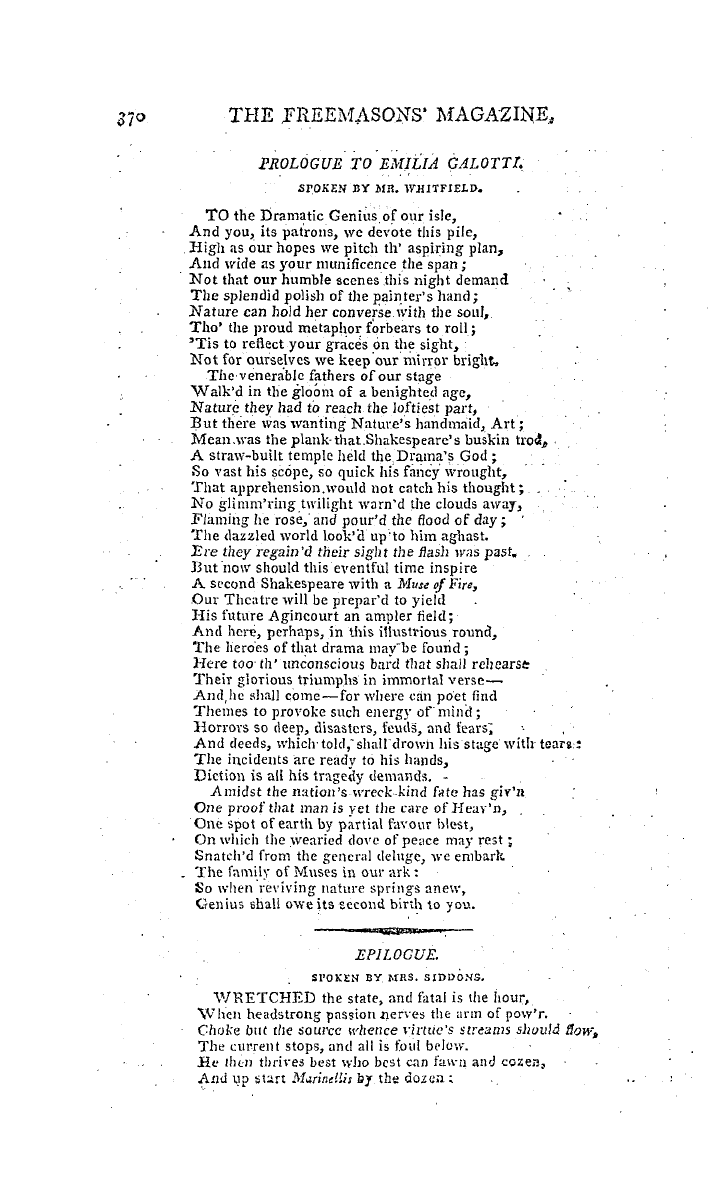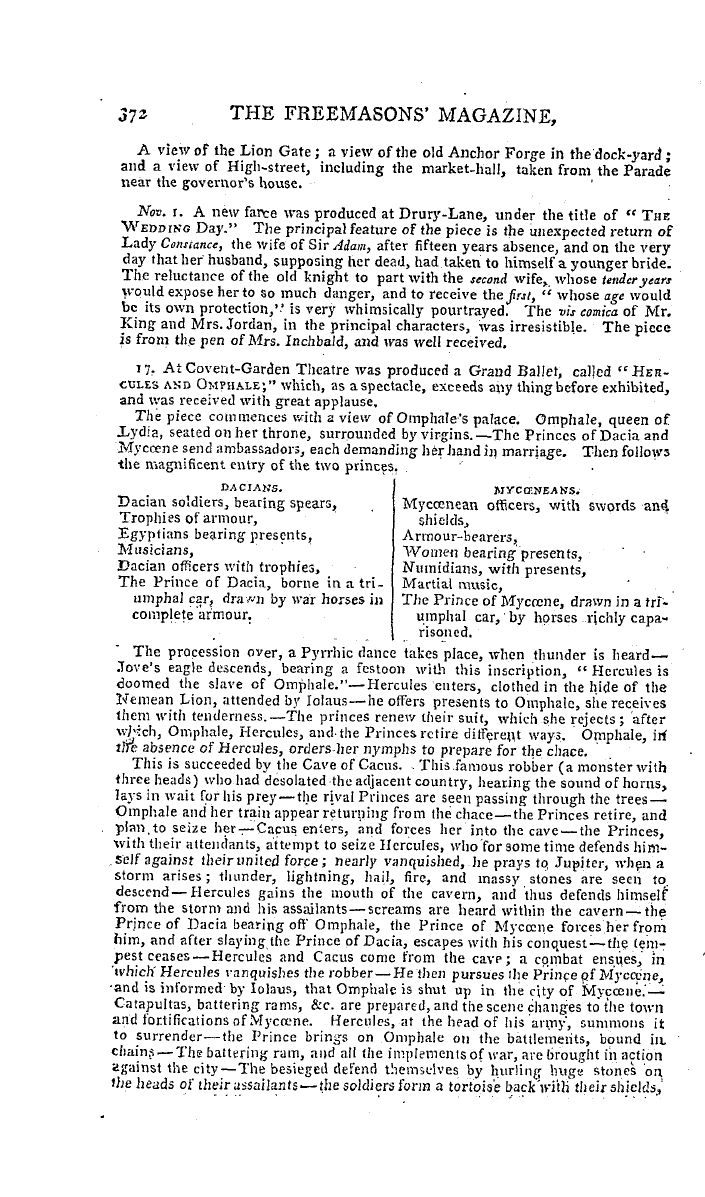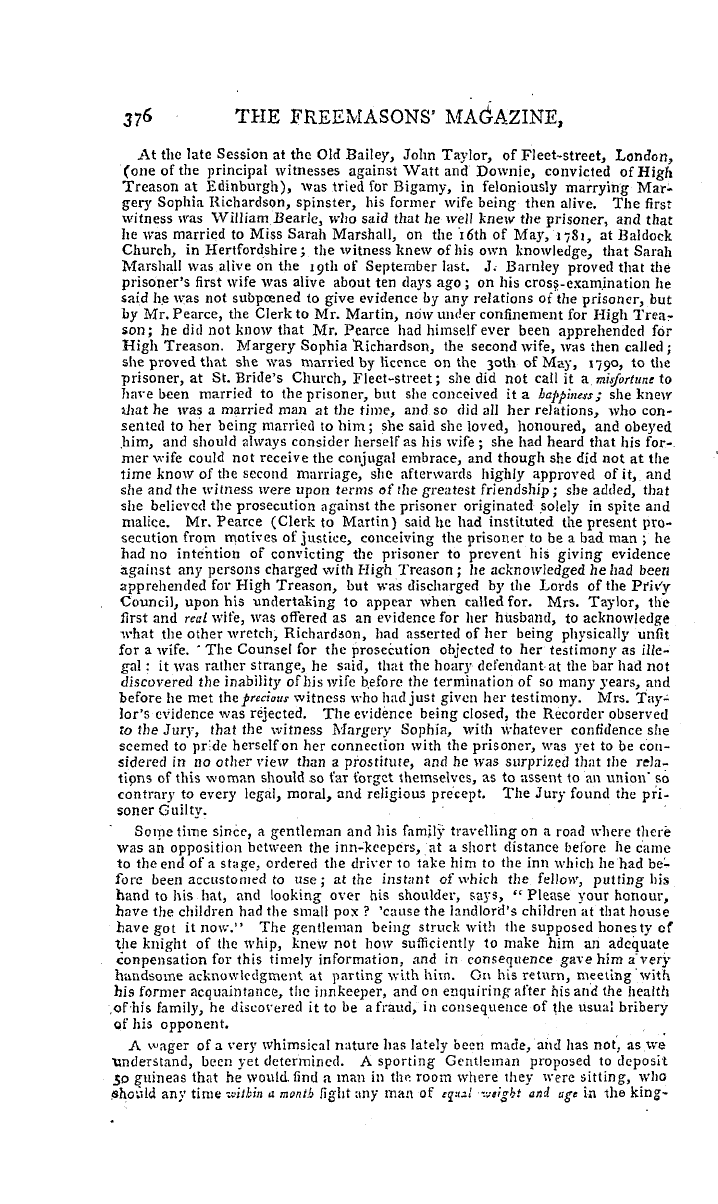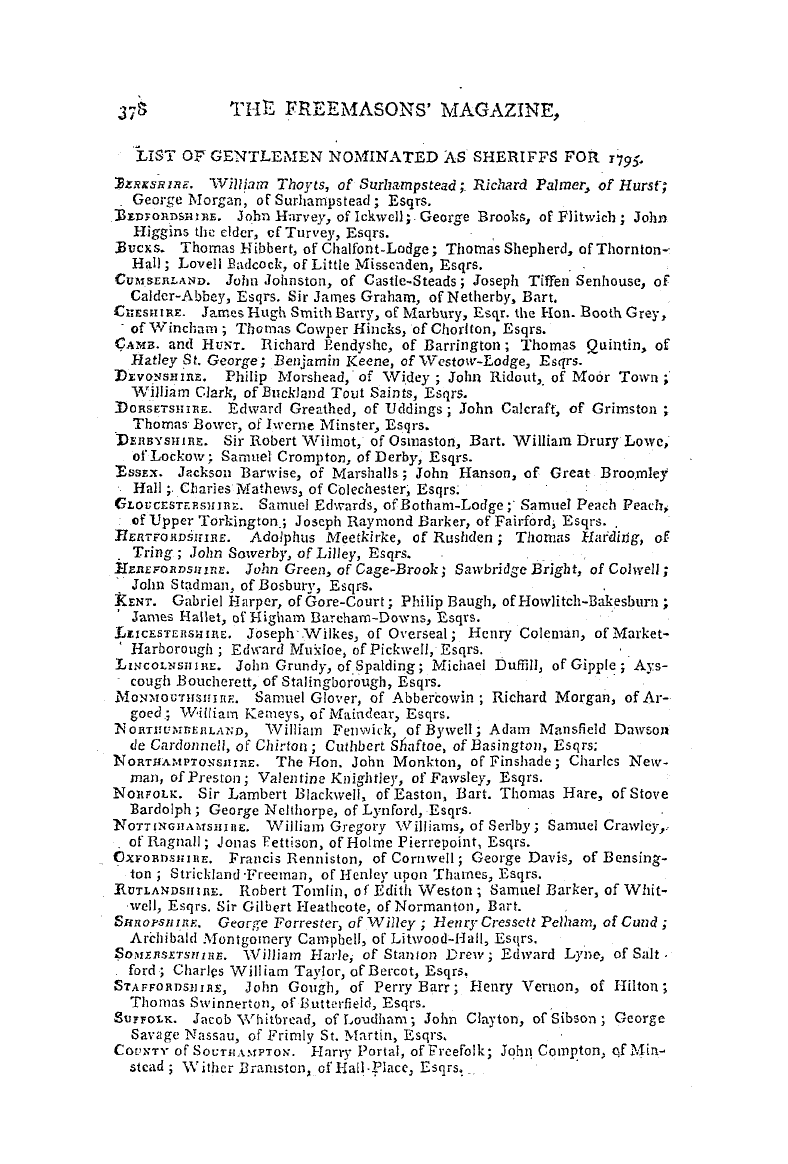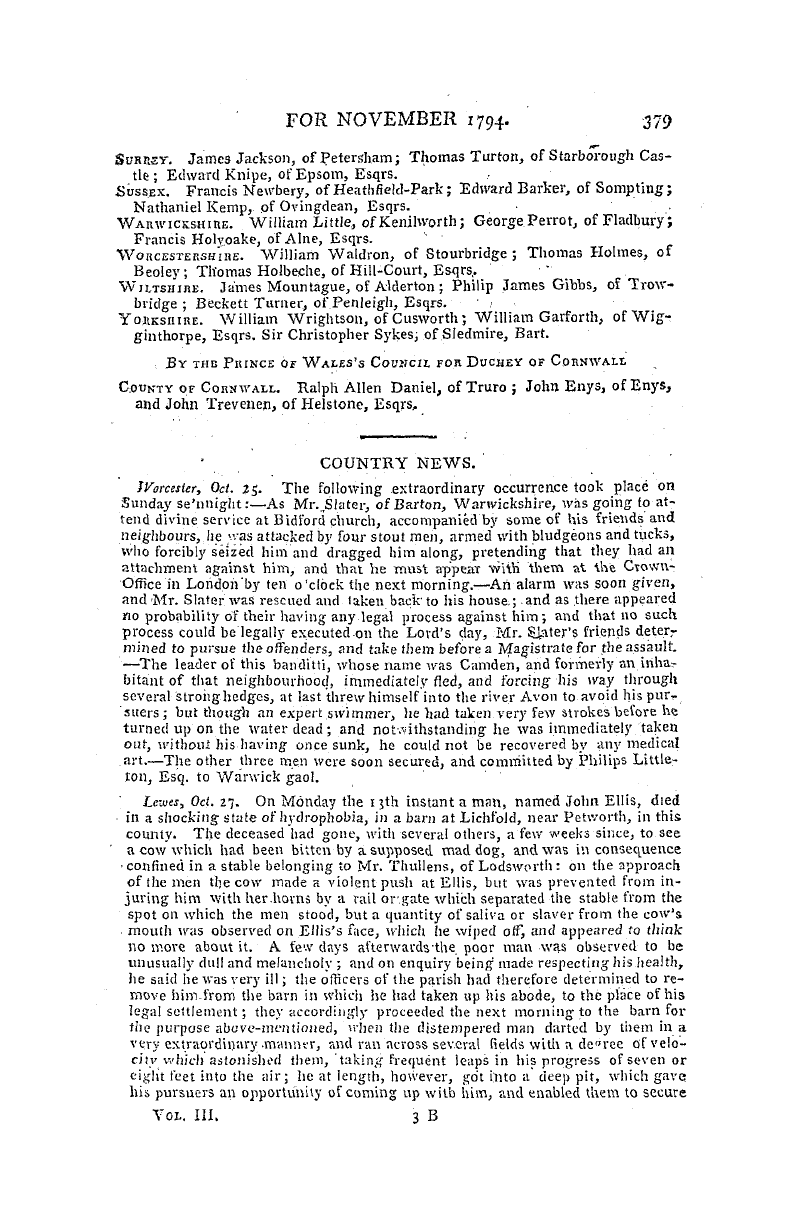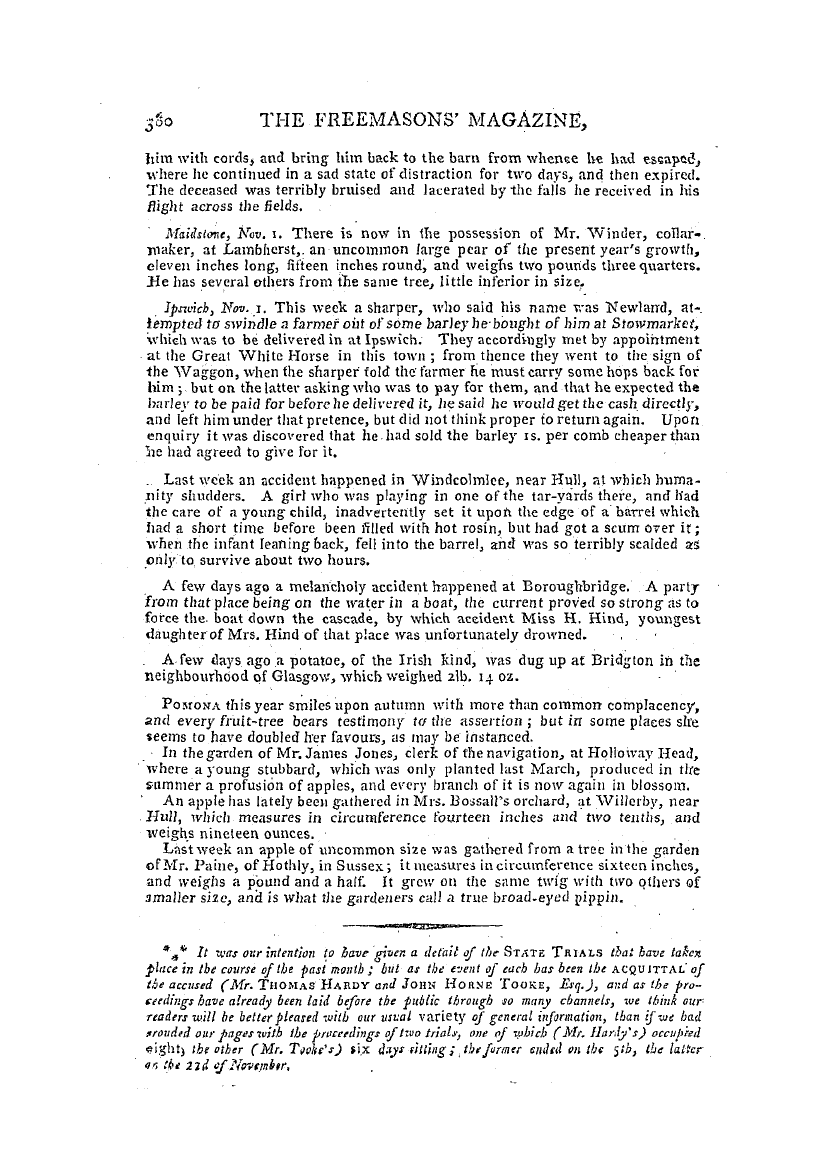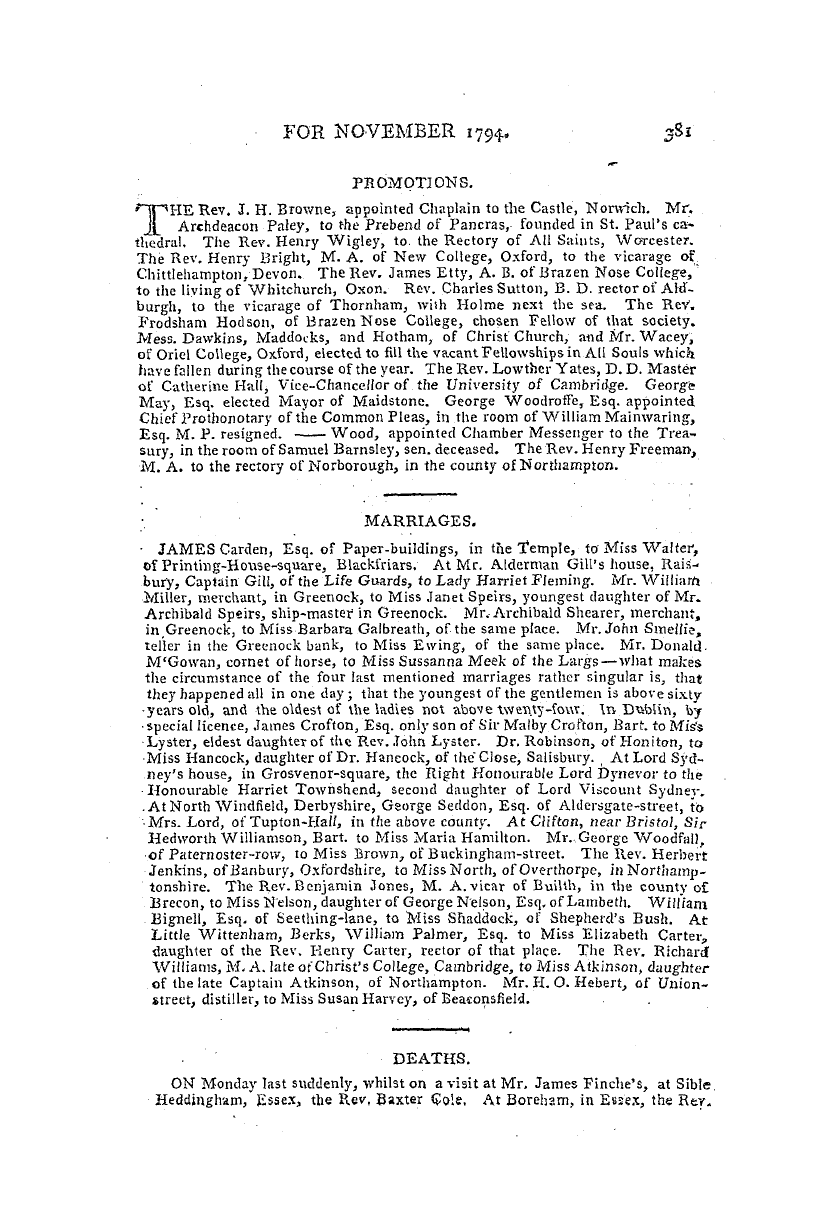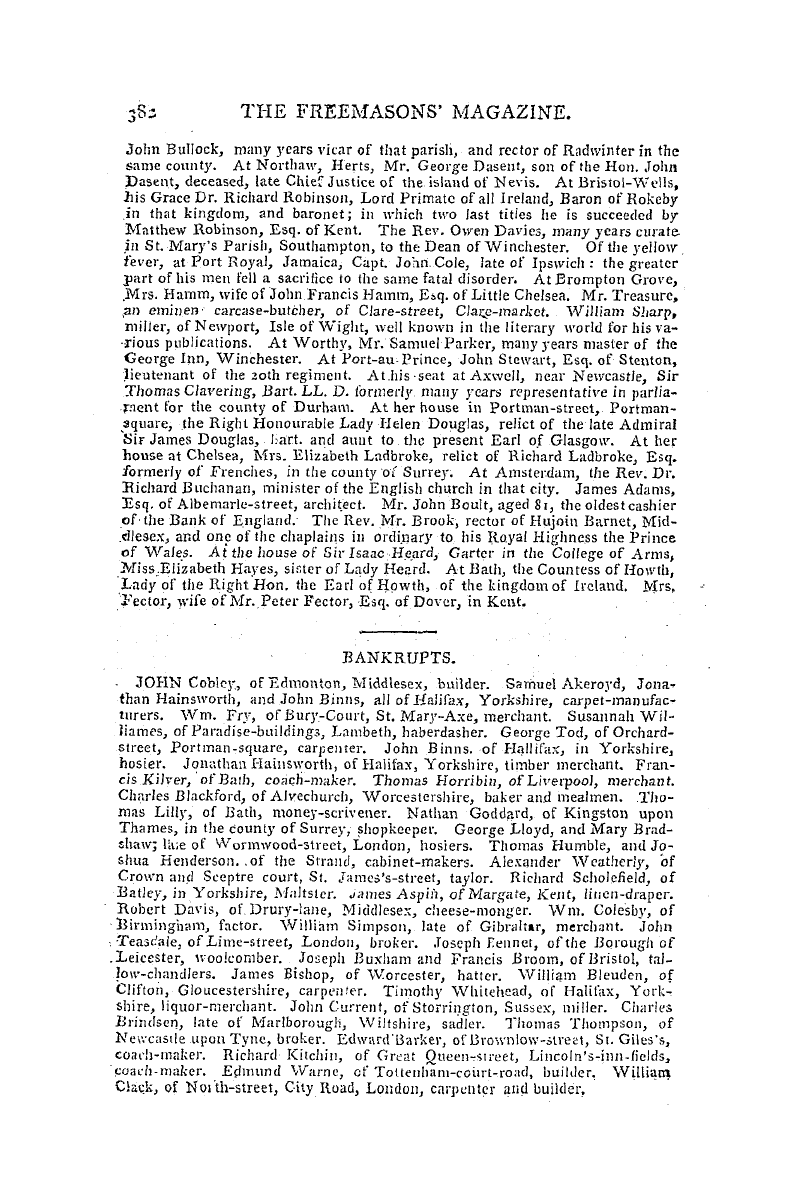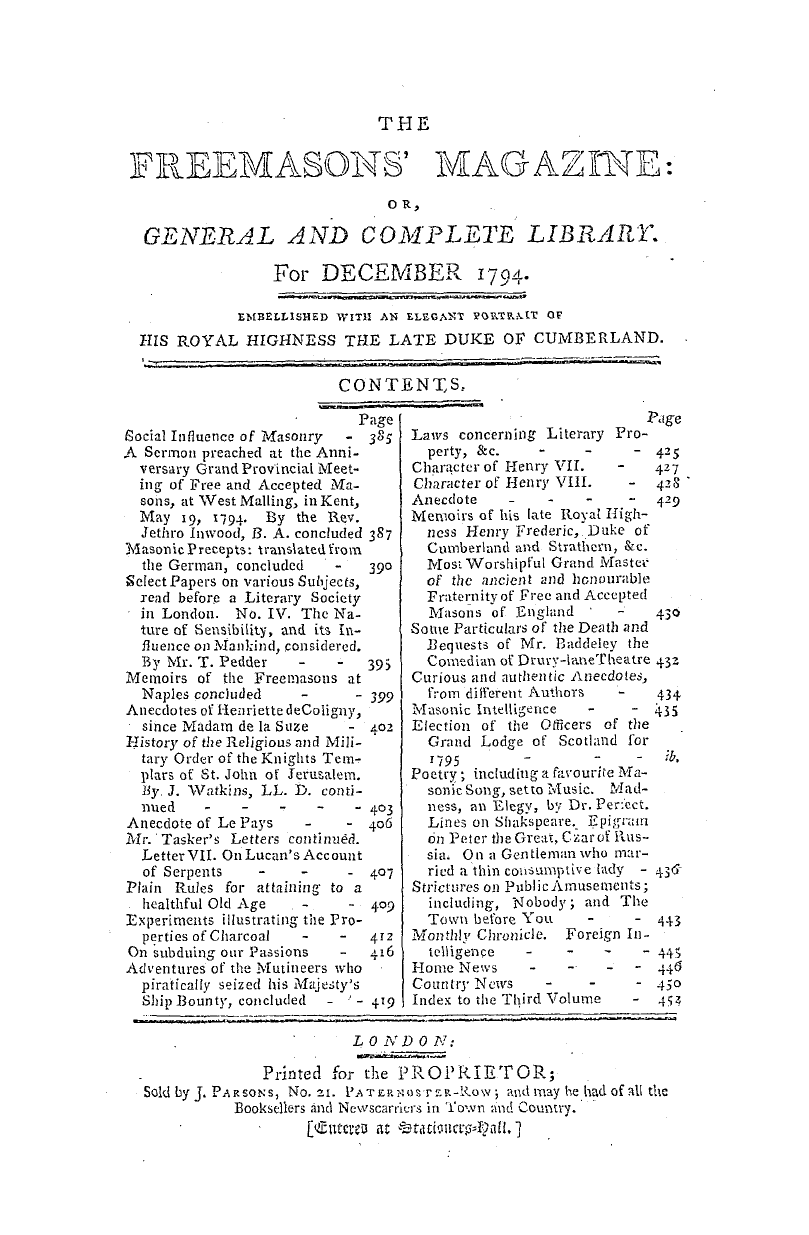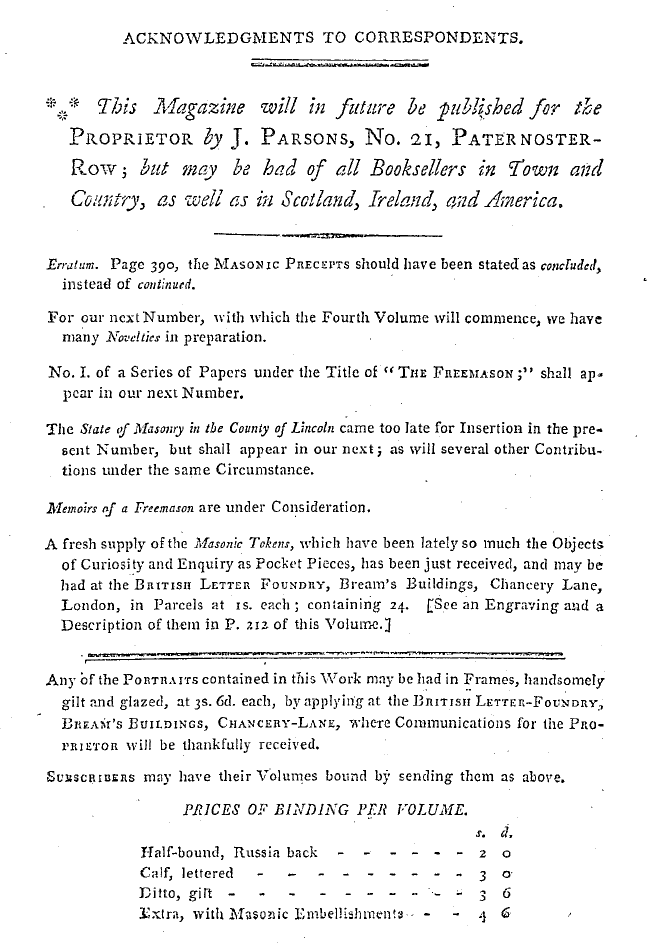Note: This text has been automatically extracted via Optical Character Recognition (OCR) software.
Epilogue.
A view of the Lion Gate ; a view of the old Anchor Forge in the dock-yard ; and a view of High-street , including the market-hall , taken from the Parade near the governor ' s house . Nov . i . A new farce was produced at Drury-Lane , under the title of " THE WEDDING Day . " The principal feature of the piece is the unexpected return of Lady Constance , the wife of Sir Adam , after fifteen years absence , and on the very day that her husband , supposing her dead , had taken to himself a younger bride . The reluctance of the
old knight to part with the second wife , whose tender years would expose her to so much danger , and to receive the frst , " whose age would be its own protection , ' - ' is very whimsically pourtrayed . The vis comka of Mr . King and Mrs . Jordan , in the principal characters , was irresistible . The piece is from the pen of Mrs . Inchbald , and was well received . 17 . At Covent-Garden Theatre was produced a Grand Ballet , called "HERCULES AND OMPSIALE" whichas aspectacleexceeds thingbefore exhibited
; , , any , and was received with great applause . The piece commences with a view of Omphale ' s palace . Omphale , queen of Xydia , seated on her throne , surrounded by virgins . —The Princes of Dacia and Myccene send ambassadors , each demanding her hand in marriage . Then follows the magnificent entry of the two princes . . ' . '
BACIANS . MYCO-NEANS . Dacian soldiers , bearing spears , Myccenean officers , with swords and Trophies of armour , shields , Egyptians bearing presents . Armour-bearers , Musicians , Women bearing presents , Dacian officers with trophies , Numidians , with presents , The Prince of Dacia , borne in a tri- Martial music , umphal cardrawn bwar horses in The Prince of drawn in In
, y Myccene , a - complete armour . umphal car , by horses richly caparisoned . The procession over , a Pyrrhic dance takes place , when thunder is heard—Jove's eagle descends , bearing a festoon with this inscription , " Hercules is doomed the slave of Omphale . "—Hercules enters , clothed in the hide of the Nemean Lion , attended by Iolaus — he offers presents to Omphale , she receives them with tenderness . —The princes renew their suitwhich she rejects after
, ; wHcli , Omphale , Hercules , and-the Princes retire different ways . Omphale , irf we absence of Hercules , orders-her nymphs to prepare for the chace . This is succeeded by the Cave of Cacus . . This . famous robber ( a monster with three heads ) who had desolated the adjacent country , hearing the sound of horns , lays in wait for his prey—the rival Princes are seen passing through the trees — Omphale and her train appear returning from the chace—the Princes retire , and planto seize her—Cacus entersand forces her into the cave — the Princes
. , , with their attendants , attempt to seize Hercules , who for some time defends himself against their united force ; nearly vanquished , he prays to , Jupiter , -ivh ^ n a storm arises ; thunder , lightning , hail , fire , and massy stones are seen to descend —Hercules gains the mouth of the cavern , and thus defends himself from the storm and his assailants — screams are heard within the cavern—the Prince of Dacia bearing off Omphale , the Prince of Myccene forces her from him , and after slaying the Prince of Dacia , escapes with his conquest—the (
empest ceases— Hercules and Cacus come from the cave ; a combat ensues , in ' which'Hercules vanquishes the robber—He then pursues ihe Prince of Myccene , and is informed by Iolaus , that Omphale is shut up in the city of Myccene . ' — Catapultas , battering rams , & c . are prepared , and the scene changes to " the town and fortifications of Myccene . Hercules , at the head of his ' army , summons it to surrender—the Prince brings on Omphale on the battlements , bound in , chains — The battering ram , and all the implements of war , are brought in action against the city—The besieged defend themselves by hurling huge stones on , ihe heads of their assailants—the soldiers form a tortoise backVi ' tli ' their shields , '
Note: This text has been automatically extracted via Optical Character Recognition (OCR) software.
Epilogue.
A view of the Lion Gate ; a view of the old Anchor Forge in the dock-yard ; and a view of High-street , including the market-hall , taken from the Parade near the governor ' s house . Nov . i . A new farce was produced at Drury-Lane , under the title of " THE WEDDING Day . " The principal feature of the piece is the unexpected return of Lady Constance , the wife of Sir Adam , after fifteen years absence , and on the very day that her husband , supposing her dead , had taken to himself a younger bride . The reluctance of the
old knight to part with the second wife , whose tender years would expose her to so much danger , and to receive the frst , " whose age would be its own protection , ' - ' is very whimsically pourtrayed . The vis comka of Mr . King and Mrs . Jordan , in the principal characters , was irresistible . The piece is from the pen of Mrs . Inchbald , and was well received . 17 . At Covent-Garden Theatre was produced a Grand Ballet , called "HERCULES AND OMPSIALE" whichas aspectacleexceeds thingbefore exhibited
; , , any , and was received with great applause . The piece commences with a view of Omphale ' s palace . Omphale , queen of Xydia , seated on her throne , surrounded by virgins . —The Princes of Dacia and Myccene send ambassadors , each demanding her hand in marriage . Then follows the magnificent entry of the two princes . . ' . '
BACIANS . MYCO-NEANS . Dacian soldiers , bearing spears , Myccenean officers , with swords and Trophies of armour , shields , Egyptians bearing presents . Armour-bearers , Musicians , Women bearing presents , Dacian officers with trophies , Numidians , with presents , The Prince of Dacia , borne in a tri- Martial music , umphal cardrawn bwar horses in The Prince of drawn in In
, y Myccene , a - complete armour . umphal car , by horses richly caparisoned . The procession over , a Pyrrhic dance takes place , when thunder is heard—Jove's eagle descends , bearing a festoon with this inscription , " Hercules is doomed the slave of Omphale . "—Hercules enters , clothed in the hide of the Nemean Lion , attended by Iolaus — he offers presents to Omphale , she receives them with tenderness . —The princes renew their suitwhich she rejects after
, ; wHcli , Omphale , Hercules , and-the Princes retire different ways . Omphale , irf we absence of Hercules , orders-her nymphs to prepare for the chace . This is succeeded by the Cave of Cacus . . This . famous robber ( a monster with three heads ) who had desolated the adjacent country , hearing the sound of horns , lays in wait for his prey—the rival Princes are seen passing through the trees — Omphale and her train appear returning from the chace—the Princes retire , and planto seize her—Cacus entersand forces her into the cave — the Princes
. , , with their attendants , attempt to seize Hercules , who for some time defends himself against their united force ; nearly vanquished , he prays to , Jupiter , -ivh ^ n a storm arises ; thunder , lightning , hail , fire , and massy stones are seen to descend —Hercules gains the mouth of the cavern , and thus defends himself from the storm and his assailants — screams are heard within the cavern—the Prince of Dacia bearing off Omphale , the Prince of Myccene forces her from him , and after slaying the Prince of Dacia , escapes with his conquest—the (
empest ceases— Hercules and Cacus come from the cave ; a combat ensues , in ' which'Hercules vanquishes the robber—He then pursues ihe Prince of Myccene , and is informed by Iolaus , that Omphale is shut up in the city of Myccene . ' — Catapultas , battering rams , & c . are prepared , and the scene changes to " the town and fortifications of Myccene . Hercules , at the head of his ' army , summons it to surrender—the Prince brings on Omphale on the battlements , bound in , chains — The battering ram , and all the implements of war , are brought in action against the city—The besieged defend themselves by hurling huge stones on , ihe heads of their assailants—the soldiers form a tortoise backVi ' tli ' their shields , '


























































